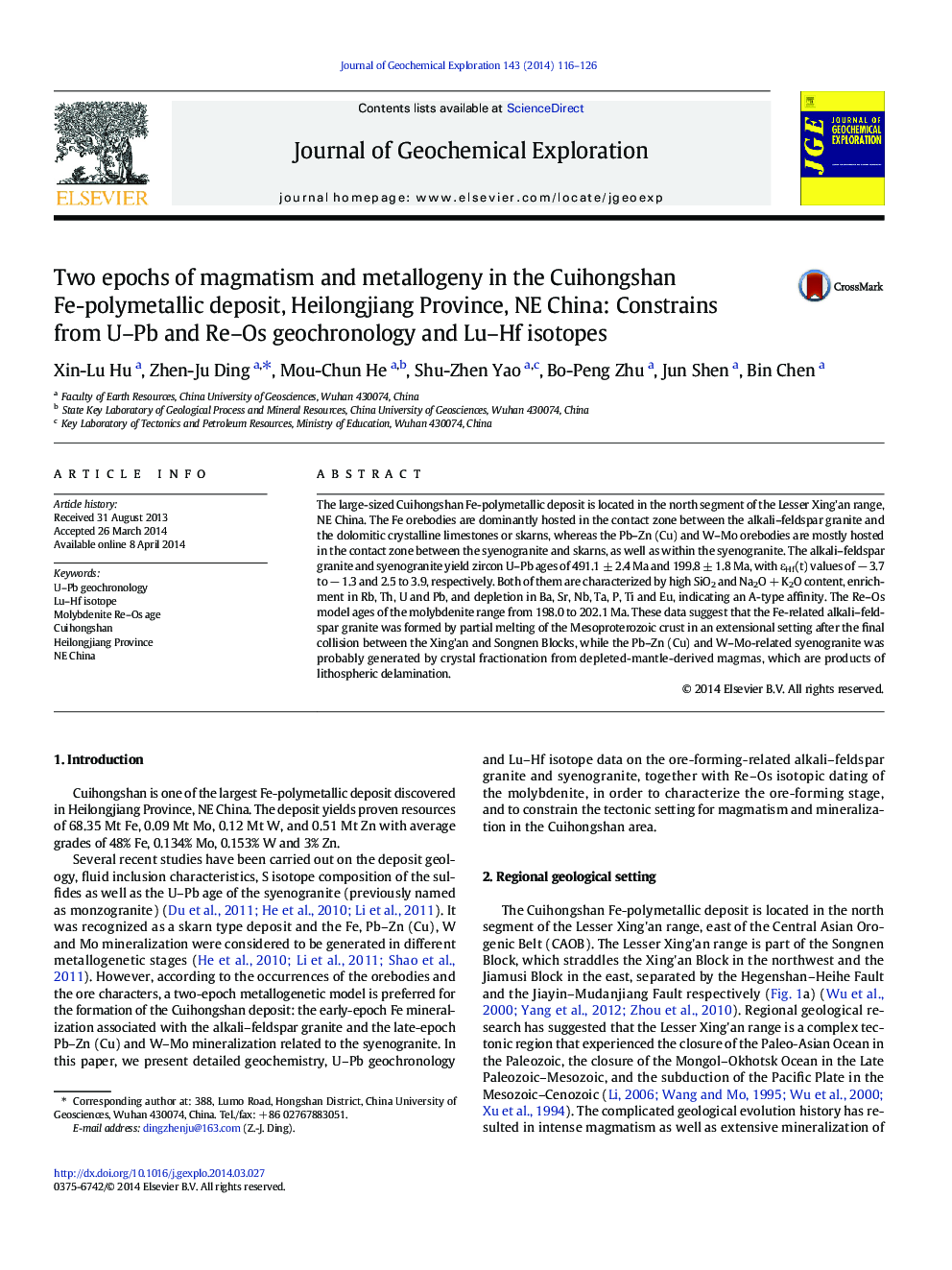| کد مقاله | کد نشریه | سال انتشار | مقاله انگلیسی | نسخه تمام متن |
|---|---|---|---|---|
| 4457357 | 1620914 | 2014 | 11 صفحه PDF | دانلود رایگان |

• We propose a two-epoch metallogenetic model for the Cuihongshan deposit.
• The Fe mineralization was related to the alkali-feldspar granite.
• The Pb–Zn (Cu) and W–Mo mineralization were associated with the syenogranite.
• The Fe mineralization took place at about 491.1 ± 2.4 Ma.
• The Pb–Zn (Cu) and W–Mo mineralization occurred at about 198.0 – 202.1 Ma.
The large-sized Cuihongshan Fe-polymetallic deposit is located in the north segment of the Lesser Xing'an range, NE China. The Fe orebodies are dominantly hosted in the contact zone between the alkali–feldspar granite and the dolomitic crystalline limestones or skarns, whereas the Pb–Zn (Cu) and W–Mo orebodies are mostly hosted in the contact zone between the syenogranite and skarns, as well as within the syenogranite. The alkali–feldspar granite and syenogranite yield zircon U–Pb ages of 491.1 ± 2.4 Ma and 199.8 ± 1.8 Ma, with εHf(t) values of − 3.7 to − 1.3 and 2.5 to 3.9, respectively. Both of them are characterized by high SiO2 and Na2O + K2O content, enrichment in Rb, Th, U and Pb, and depletion in Ba, Sr, Nb, Ta, P, Ti and Eu, indicating an A-type affinity. The Re–Os model ages of the molybdenite range from 198.0 to 202.1 Ma. These data suggest that the Fe-related alkali–feldspar granite was formed by partial melting of the Mesoproterozoic crust in an extensional setting after the final collision between the Xing'an and Songnen Blocks, while the Pb–Zn (Cu) and W–Mo-related syenogranite was probably generated by crystal fractionation from depleted-mantle-derived magmas, which are products of lithospheric delamination.
Journal: Journal of Geochemical Exploration - Volume 143, August 2014, Pages 116–126